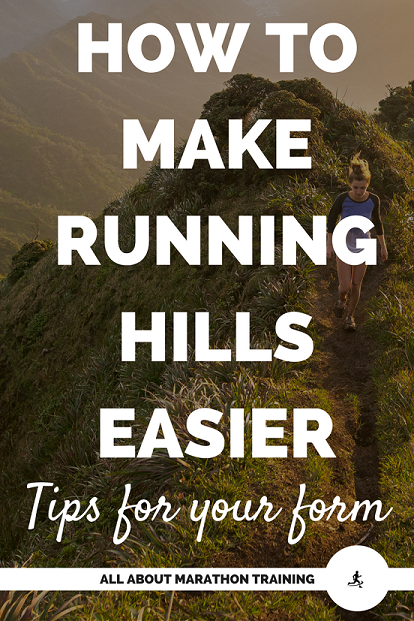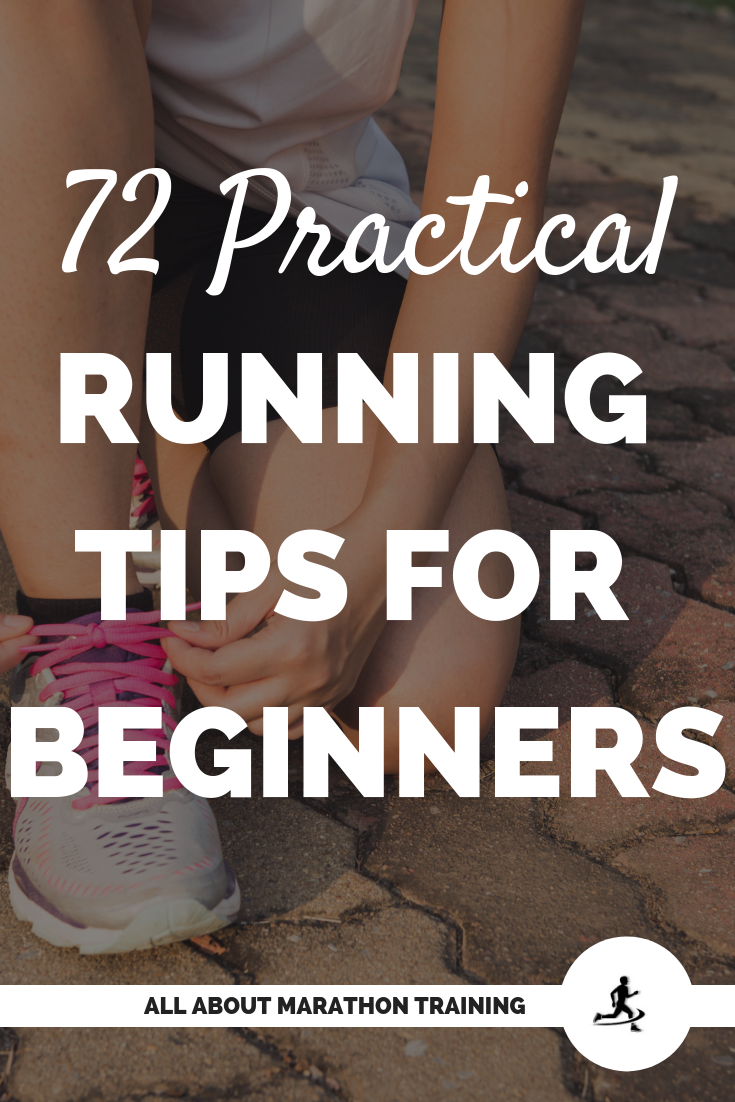best Correct Running Form Tips for long distance runners
You might not think that correct running form is very important however it really can make all the difference when it comes to strength, speed, and going the distance, especially in a marathon.
Everybody has a different running stride and style.
Some glide along gracefully while others look as though they might keel over at any moment.
They run in such ways because it is comfortable for them or they don’t know the difference that using correct running form could have on their body.
Those who are serious runners though catch on quickly to the fact that proper running techniques will help them go the extra mile and comfortably too!
Benefits of Correct Running Form:

The benefits of correct running form are:
- an increase in speed (which is what most racers are naturally inclined to want)
- a prevention against running injuries
- and a more enjoyable, smoother and energized run.
If you are a beginner runner, correct running form is something you want to focus on before habits are made.
Watch some running form videos, have someone take a video of you running and analyze what you are doing right or wrong.
Some of the troubles you might currently be suffering from during a run due to poor form:
Here are some problems you might suffer from if you are not currently using correct running form.
Tension
Many runners are plagued by tension everywhere throughout their body-hips, legs, neck, shoulders.
They keep pent up energy in these areas instead of trying to relax and tighten them as they properly should.
A lot of this comes down to our form!
Especially watch your shoulders!
Even when we are not running we have the tendency of walking, sitting, standing, etc. with our shoulders up to our ears.
It’s no different in our running form either so be on the lookout for this.
cramps
If you are constantly plagued by cramps you might not be breathing correctly.
You should be breathing very deeply through your diaphragm and keep your chest up and out.
Cramps can also be caused by drinking too much water or not enough during certain times throughout a run.
Tightness
Yes, this is different than tension that you might feel.
Tightness can be especially detrimental as it can easily cause you to pull a muscle that will force you to have to take a break from your running.
A lot of tightness can be overcome through proper stretching but incorporating correct running form will help reduce and combat muscle tightness and soreness as well.
Correct Running Form Tips for a Smooth, Strong, Energy Efficient Form:
posture
Posture is a key to correct running form and will directly help target your trouble spots.
As you run your body should be perpendicular to the ground with a slight forward lean towards the ground.
Your head and shoulders should not be leaning too far forward or back. As you run concentrate on moving your hips forward and everything else will follow.
Relaxed body
Keeping your body relaxed especially your upper body will help you conserve energy.
Think of your upper body as being smoothly carried along since its your legs that are doing most of the work.
Keep your shoulders relaxed.
It’s easy for them to start a hike up to your ears. Especially if you are beginning to feel sluggish do a quick shoulder check.
Chest
Focus on keeping your chest lifted as this will help to promote air flow and better breathing.
Think of a string pulling your heart up towards the sky.
If your chest is sagging you may begin to feel tired as you are less capable of taking a full breath of air.
Also, lifting your chest will allow your torso to elongate which will again help with breathing through to your diaphragm.
Abs
Pull your abs in to take pressure off of your back.
Especially if you are running longer distances or maybe have some extra weight to lose, pulling your belly button in towards your spine will give you back a break from doing all of the work and will help prevent a backache but also give you a stronger more correct running form.
Arms
Your arms can help you be speedy or they can help conserve your energy stores.
In a long distance run, you will want to keep your arm swing to a minimum since an over-pronounced swing (such as when you sprint) will take up large amounts of energy.
Don’t bring your arms across your body when you are running. Keep them in a forward and backwards motion.
When the finish line is in sight, that's when you really want to swing those arms in strong, powerful movements for your sprint across the finish!
Here are some arm strengthening exercises for runners.
Hands
Some runners like to describe proper hand form as protecting a butterfly in their hands or not crushing chips in their hand.
The point is to not clench your fist but to keep your hands cupped lightly and relaxed.
I like Jeff Galloway's tip of softly touching my forefinger and thumb together as it is difficult to clench your fist if you are in this position.
Head
Keep your head up and think of spinal alignment.
You shouldn't let your chin drop towards your chest.
Instead focus on keeping your chin up and do a posture check to see if you spine and neck are in line.
This will go a long way in reducing upper body soreness.
feet
As for your feet, the more steps you take the better.
Don’t focus on taking big steps, rather take small, little steps. You will have better form, less impact, and will go faster.
Don’t let the front foot land far out in front of your body. (Termed “overstriking”). It should land directly under you.
See this page on the best running shoes for marathoners.
best running form for speed and distance
If you want to become faster, here are some form tips to work on!
knees
If you are an endurance runner looking for more speed watch your knees!
Sprinters lift their knees up high when they run because they want to produce more power and stride length.
As a marathon runner you only need to lift your knee up slightly which well help you to conserve more energy which translates into a stronger sprint at the finish line.
watch your running stride
Your stride is the length of the step that you are taking.
It is the distance between your front foot and your back foot.
Contrary to what you might have thought, a large stride length does not mean faster speed. In fact shorter stride lengths do!
Many runners have a longer stride length than necessary but the key to speed is just increasing the frequency of your strides.
Take more steps not less!
watch your arm movement
A common mistake long distance runners often make is moving their arms too much.
The greater your arm swing the greater the amount of energy you expend.
During a marathon, where your goal is to conserve energy and correct running form because even more important, you need to keep your arms relaxed, and down near your waist.
A faster arm swing means a faster speed.
When you see the finish line in sight that is the time to increase your arm swing which will give you more energy and speed for your sprint to the finish.
Correct Running Form on Hills:
form tips for running uphill:
Keep your posture straight & in alignment
Don’t lean too far forward or backward.
You will get a greater push off the ground if you keep your posture erect and in line – head, chest, hips, feet.
This will keep you from having to fight gravity the whole way up.
Many runners tend to slope their shoulders and drop their head but try to keep a straight line throughout your torso and up into your shoulders, neck, and head.
Shorten your stride and increase your footsteps
Don’t take long strides as this will drain you of energy that could be conserved.
Also the more frequently you take steps, the less impact will be placed on your body.
Keep a 5k effort
Don’t keep the same speed as your 5K pace but keep the same EFFORT.
Running faster uphill can cause your form to become sloppy as you expend more energy. Keep everything steady and consistent.
As mentioned earlier, a good gauge of your effort is your breathing. Your breathing should not increase drastically as you begin to climb a hill.
increase your arm swing
Pick up the rhythm and arm swing slightly as you near the top.
This will help to give you that extra push of momentum to help you surge up and over the hill without having to give up too much energy.
keep your heels under your knee
Keep your heels under your knee. When running up a hill, do not allow your feet to extend out beyond your knee.
You are already placing a good amount of stress on your knee joint by just running up an increase, don't accentuate the stress by foot striking out in front of your knee.
do a form check
Stay mentally focused and do a form check to make sure you are using correct running form techniques from time to time.
Hill workouts are hard but if you stay focused and tell yourself you can do it then you CAN do it.
Keep your breathing in check
Once in awhile, check your breathing.
When running up hills you should be running at 2-2 (2-steps breathing in, 2 steps breathing out) or maybe a 2-1 or 1-2. Also, using correct breathing posture can really make a difference in comfort and efficiency.
Form tips for running downhill
never run too fast down a hill
It is much easier to injure yourself when running downhill versus running uphill because you are placing a lot of braking force (eccentric stress) on your quadriceps and lower leg muscles as you go.
Don't ever think that you do not need to train yourself to run downhill properly!
Your legs will take a beating if you do not employ an appropriate pace and stride for your body.
give yourself time to recover and catch your breath
Allow gravity to carry you. If you have been doing hill repeats, then this is your time to recover.
Do a slow, light jog to the bottom or even walk.
keep your footsteps light and soft
Do NOT pound when descending a hill.
The force imparted on your body is already high enough due to gravity.
Although it may feel easier than running uphill, many, many running injuries are due to running downhill.
Your eccentric muscle forces are working to cause a breaking force and if your body is not used to this type of running it can be very damaging especially for beginner runners.
don't increase your stride length
Many runners extend their landing foot too far out in front of their body when they are coming down a hill.
Keep your foot right under your center of mass and take short, quick steps.
watch your pace at the bottom of the hill
Be aware of your pace as you reach the bottom.
A lot of runners make the mistake of not slowing their pace down to normal and continue at a faster pace once they reach flat surface.
During a long run or a race this can be devastating as you will expend a lot more energy without realizing it before it's too late.
Keep checking your pace for several minutes after reaching the bottom of the hill in order to make sure you are running at your pre-determined pace.
Other Correct Running Form Techniques:
breathe deeply
As you begin to run your need of using a larger amount of your lung capacity increases.
You are going need to get more oxygen to your muscles, especially those hard-working leg muscles and the best way to do this is to take deep breaths.
Your breaths should come from deep inside of you which will increase your oxygen consumption.
Learn more about breathing tips as a runner.
run lightly
Runners with bad form usually have a loud footfall while those with good form are light and soft on their feet.
Try and focus on keeping your body light and graceful which helps to conserve energy and prevent injury due to hard impact.
Obviously it is hard to remember all of these form tips when you are out running but you should know what areas you are struggling on and would like to improve.
Pick one and work on it. The benefits will surely begin to show!
Also related to this page is Run with Caroline's page on head to toe running form technique.
Pages Related to Correct Running Form:
👋Sign up to receive the free printable strength exercises for runners: 👇
 |
As featured on:

Alternate Images:












New! Comments
Have your say about what you just read! Leave me a comment in the box below.